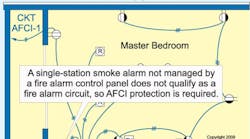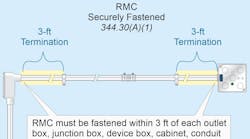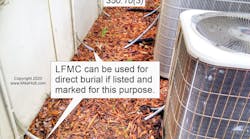Q. What are the AFCI protection requirements for dwelling units, and do these requirements apply to smoke alarms?
A. All 15A or 20A, 120V branch circuits in dwelling units supplying outlets in family rooms, dining rooms, living rooms, parlors, libraries, dens, bedrooms, sunrooms, recreation rooms, closets, hallways, or similar rooms/areas must be protected by a listed AFCI device of the combination type [210.12(B)].
Smoke alarms connected to a 15A or 20A circuit of a dwelling unit must be AFCI protected if the smoke alarm is located in one of the areas specified In 210.12(B). The exemption from AFCI protection for the "fire alarm circuit" contained in 760.41(B) and 760.121(B) doesn’t apply to the single- or multiple-station smoke alarm circuit typically installed in dwelling unit bedroom areas. This is because a smoke alarm circuit isn’t a fire alarm circuit as defined in NFPA 72, National Fire Alarm Code. Unlike single- or multiple-station smoke alarms, fire alarm systems are managed by a fire alarm control panel.
210.12(B) Exception No. 1: The AFCI protection can be located at the first outlet if the circuit conductors are installed in RMC, IMC, EMT or steel armored Type AC cable, and the AFCI device is contained in a metal outlet or junction box.
210.12(B) Exception No. 2: AFCI protection can be omitted for branch circuit wiring to a fire alarm system in accordance with 760.41(B) and 760.121(B), if the circuit conductors are installed in RMC, IMC, EMT, or steel armored Type AC cable.





